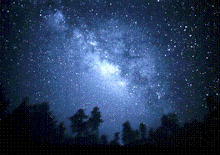
Forty years ago man first walked on the moon
Forty years ago on July 20, 1969, American astronaut Neil Armstrong realized the oldest dream of human civilizations when he became the first man to walk on the moon.
As an estimated 500 million people around the world waited with bated breath and crowded around fuzzy television screens and radios, Armstrong stepped down the lunar module's ladder and onto the lunar surface.
"That's one small step for man, one giant leap for mankind," Armstrong intoned, his words slightly distorted by distance and communications equipment, in a phrase now etched forever into the history books.
The excited crowds burst into cheers as he was joined by fellow astronaut Buzz Aldrin who described the "magnificent desolation" of the lunar landscape, never before witnessed in close up on Earth.
Only 12 earthlings have walked on the surface of the moon, the Earth's lone mysterious satellite, which has fuelled our dreams and imaginations since the earliest humans walked the planet.
And the last moonwalk was already more than a generation ago in 1972.
But at the height of the Cold War, the Apollo program succeeded in proving America's dominance in the space race. Planting an American flag on the surface of the moon in 1969 scored major morale-boosting points over the Soviet Union.
The Apollo program, which led to six successful moon landings between 1969 and 1972, had begun eight years earlier in 1961 when then president John F. Kennedy threw down a bold challenge to Congress to put a man on the moon within the decade.
"I believe that this nation should commit itself to achieving the goal, before this decade is out, of landing a man on the moon and returning him safely to the Earth," Kennedy said.
The decision to shoot for the moon was above all a political one, said John Logsdon, curator and expert at the National Air and Space Museum.
The Soviet Union had been the first nation to put a satellite into orbit in 1957, with the launch of the Sputnik, and in 1961 Yuri Gagarin became the first man to fly in space.
"The Soviet Union had defined space achievement the measure of power and desirability of a modern society and President Kennedy decided that leaving a dramatic space achievement only to the USSR was not in the US interest," Logsdon told AFP.
The space race became symbolic of the Cold War battle for dominance between competing ideologies and polarized world powers.
In 1970 just months after the lunar landings, Soviet dissident Andrei Sakharov in an open letter to the Kremlin wrote that America's ability to put a man on the moon proved the superiority of a democracy.
"NASA had been studying a mission to the moon prior to Kennedy's decision and had concluded that there was no major technological barrier," Logsdon said.
"On the other hand, there was little experience in building the kind of large and complex systems required to carry out the mission."
Thanks to America's growing prosperity and their scientific and technical achievements, the US swiftly put into motion the Apollo program. In 1969 it was estimated at some 25 billion dollars -- about 115 billion at today's value, or more than six times NASA's current budget.
But the Apollo program hit some setbacks. In 1967, three astronauts were killed in an accident on the ground.
Then in December 1968 Apollo 8 blasted off, and America's first manned flight around the moon took place.
Six months later it was followed by Apollo 10, a lunar reconnaissance trip with three astronauts on board.
Then on July 16, 1969, Armstrong, the mission commander, Aldrin and Mike Collins settled themselves into the orbiting command module Columbia on the Apollo 11, which was taken up into space perched on the Saturn V rocket.
The huge rocket, towering some 111 meters (330 feet) high, lifted off from the Kennedy Space Center at 9:32 am (1332 GMT).
Four days later, Armstrong manually maneuvered the lunar module, dubbed "Eagle," to land on the moon's Sea of Tranquility.
"Houston, Tranquility Base here. The Eagle has landed," he told mission control in Houston, Texas.
At 22:50 pm (0250 GMT), the 38-year-old Armstrong left the module and stepped down a short ladder. With a small leap, he landed on the moon's surface at 22:56pm and 48 seconds (0256 GMT).
Twenty minutes later he was joined by the 39-year-old Aldrin.
Together they spent 21 hours on the moon's surface, planting the American Stars and Stripes and a steel plaque bearing a message of peace.
They collected some 21 kilos (43 pounds) of rocks and then returned to Columbia where Collins was awaiting them for a triumphal return to Earth.
They landed back on July 24, ditching into the Pacific Ocean.
--POST BY ASTRONOMY SOCIETY OF SMK KEAT HWA --
 02
02 06
06 08
08























_-_09_February_2009.jpg)

.jpg)


